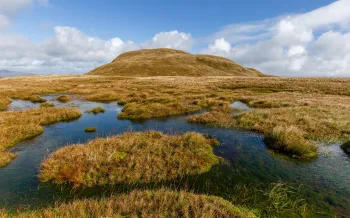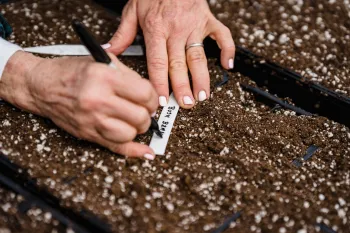Which soil amendments are healthy for the garden and the planet?
Seems like every time I go to the nursery, there are new things to buy – and I’m not talking about the plants. This is especially true when it comes to soil amendments. Some of these packaged materials are helpful. Worm castings are packed with millions of beneficial microbes. Leaf mold boosts nutrients. Biochar, a charcoal-like
substance, improves soil fertility and carbon sequestration. Aged manure from cows and other beasts conditions the soil, improves drainage, and provides macro and micronutrients. Compost, made from decomposed garden and kitchen scraps, enriches soil structure, aeration, and water-holding capacity.
These are tried and true, research-backed, science-tested amendments that can make a real difference in the health of your soil and garden.
But what about the other stuff? The vermiculite? The perlite? The peat? What is that stuff, and do you need it? Is it healthy for the garden – and the planet?

Let’s start with peat. Peat moss is a fluffy, absorbent, lightweight brown material you shovel into soil to increase water retention and acidity. For that reason, it has been a mainstay for gardeners growing acid-loving plants like blueberries, hydrangeas, and camellias.
Peat moss comes from peat bogs. These are large wetland areas where decaying plant matter called peat has accumulated extremely slowly – just a millimeter a year – for 12,000 years. For you armchair paleontologists, that’s about the time the last ice age was ending.
But here’s the kicker: peat bogs comprise just 3% of the planet, but they store a third of the world’s carbon. Incredible! That’s more carbon than all the planet’s forests combined. In fact, only the world’s oceans sequester more carbon than the peat bogs. As a result, they are absolutely critical to the health of the Earth’s carbon cycle – the process that regulates the Earth’s climate and supports life.
I think you know where this is going. Every time peat moss is harvested, carbon is released, habitat is destroyed, C02 is unleashed into the atmosphere, and the risk of a warmer Earth rises. The salt in the wound is that it takes a few millennia for the peat to regenerate. Bottom line? Peat moss is a non-renewable resource. And the harm that could be unleashed if the bogs were heavily stripped is unthinkable.
It should therefore come as no surprise that some countries have banned the sale of peat moss. Question is, should you join them?
That’s up to you, but to help nudge you into making the Earth-friendly decision, please consider some of the excellent alternatives. Coconut coir is fast becoming a peat moss alternative because it provides many of the same benefits. Adding compost, pine needles, and oak leaves gradually increases soil acidity.

Next, let’s take a peek at those sacks of vermiculite, the small brown flecks you often see in potting soil, and perlite, the companion white flecks. Vermiculite is a
mineral that improves water and nutrient retention in soil and enhances aeration, which is critical for healthy roots. Perlite excels at improving drainage, which is good for plants that don’t like wet roots.
These common potting soil bedfellows sound like they were stamped out of a machine, but they are actually natural materials. Vermiculite is a mica-type mineral that’s heated at high temperatures, and perlite is a naturally occurring volcanic glass. Are they healthy for soil? Yes, they work extremely well together in soils meant for starting seeds. Are they an Earth-friendly choice?
Perlite is a non-renewable resource, although to date, less than one percent has been mined. Vermiculite, on the other hand, requires significant energy for the mining and processing. I guess you’d have to say it’s a mixed bag, but it seems to me that the benefits outweigh the negatives.
Finally, what about those innocent looking bags of sand? Should you mix it into your clay soil? No. Resist the urge. Why? Because mixing clay soil with sand creates
something akin to concrete. Oops!
By Marie Narlock, July 19, 2025
